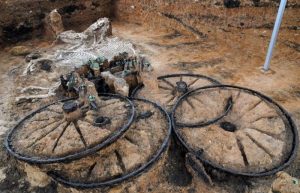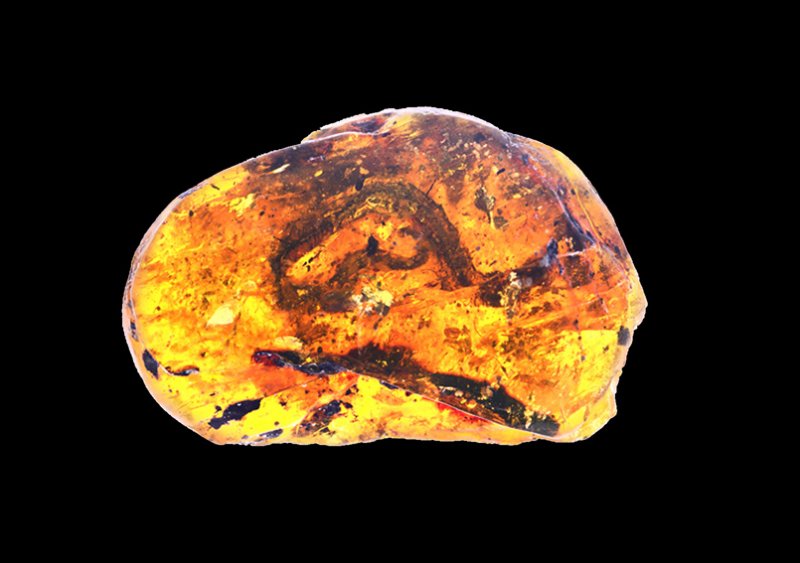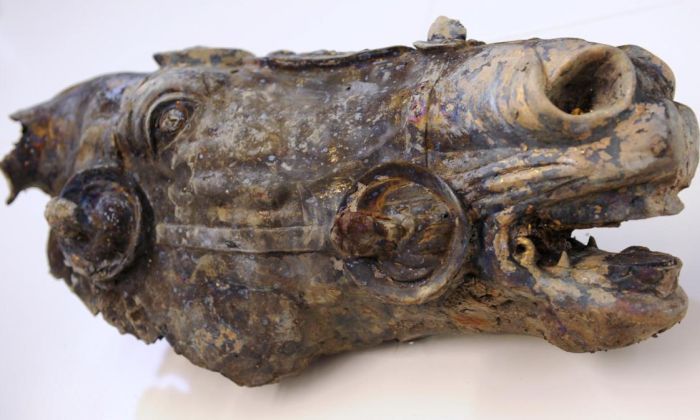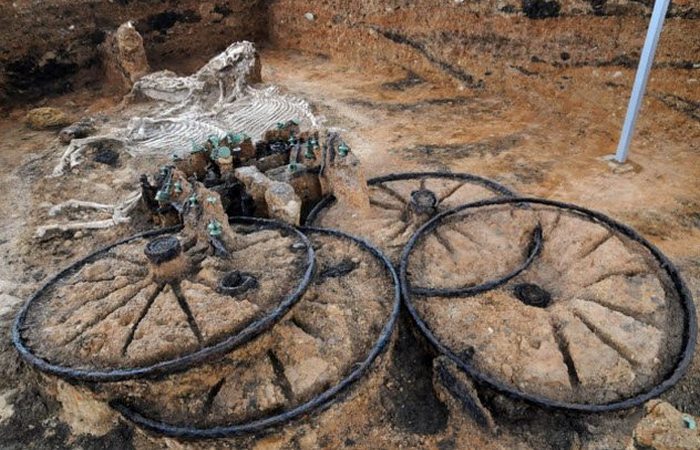10 archaeological finds that were made on the territory of Bulgaria and surprised scientists
 The magnificence of Bulgarian archeology is often forgotten and spoken about Ancient Egypt and Greece only. Nevertheless, the history of this Eastern Balkan state spans thousands of years, and several powerful civilizations once called this place their homeland. Today the Bulgarian land is replete with ruins and treasures. Even in the depths of the Black Sea and on the islands of Bulgaria there are many unusual finds.
The magnificence of Bulgarian archeology is often forgotten and spoken about Ancient Egypt and Greece only. Nevertheless, the history of this Eastern Balkan state spans thousands of years, and several powerful civilizations once called this place their homeland. Today the Bulgarian land is replete with ruins and treasures. Even in the depths of the Black Sea and on the islands of Bulgaria there are many unusual finds.
1. Chariot with horses
In 2008, a group of archaeologists discovered a wooden chariot buried in ancient Thrace (modern Bulgaria). What is most curious, along with her were buried 2 horses, which seemed to continue to drag the chariot and after death. Also found near the dog bones. The owner of the burial was discovered only a year later. Next to the chariot was a brick tomb, inside of which rested a man who was buried about 1800-2000 years ago.
Things found in the tomb (armor, gold rings and coins, as well as a silver bowl with the image of Eros, the Greek god of love), suggested that this man was a Thracian nobleman or leader. This kind of ancient burial is often found in Bulgaria. The tradition of elite burials originated 2,500 years ago and reached its heyday in Roman times (2100-1,500 years ago).
2. Mysterious arrow
Although Bulgaria is full of burials with chariots, from time to time more mysterious graves are also found. In 2017, museum workers unearthed an antique Odeon in the city of Plovdiv, which the Romans built here for artistic performances. Among the ruins of this ancient Odeon, a team of archaeologists discovered a grave. Thanks to the ceramics found in it, the find was dated from the XI – XII centuries.
A man of unknown sex with an arrow in his chest was buried in the grave. Unfortunately, the bones have been mixed for thousands of years. This made it difficult to determine what the arrow was doing among them. One theory says that the weapon was solemnly placed on the chest of the deceased (it was a famous ancient funeral rite). But it may be that the man was mortally wounded, and no one bothered to pull out an arrow before burial.
3. Last tour
Today’s livestock comes from dangerous wild bulls called “tours”. These animals could weigh up to 1100 kilograms and they had deadly horns. The last representative of this species died in Poland in 1627, and in Bulgaria tours were considered extinct from the XII century. In 2017, during the excavations in the famous Rusokastro fortress, the bones of animals dated to the Middle Ages (XIII – XIV centuries) were found.
Among the remains of domestic and wild animals found the remains of dead tours. By that time, once abundant herds of wild tours, as scientists believed, existed only on the territory of Poland, Belarus and Lithuania. Thanks to the remains found in Rusokastro, now Bulgaria can be added to this list. Most likely, they were massively hunted at that time.
4. Golden Mask
Like Egypt, Bulgaria has its own Valley of the Kings. But instead of tombs filled with pharaohs, the landscape of Bulgaria is replete with Thracian mounds. But in 2004, archaeologists made a discovery, which they claim can compete with the treasures of the Greek warrior ruler Agamemnon and Tutankhamen. More precisely, with their funerary masks. During the excavations in the valley, a team of scientists found a huge tomb. It was built of six stone slabs weighing almost 12 tons.
The special excitement caused a golden mask weighing 0.45 kg, found inside. It was a unique find of the Thracian culture, which flourished 2400 years ago. The funeral mask and the huge tomb show that the Greeks and Egyptians were clearly not the only great ancient civilizations. Indeed, during its heyday, the people of Thrace ruled over modern Bulgaria and owned territories in Macedonia, Romania, Turkey and Greece.
5. Roman bath
In 2016, an archaeologist accidentally walked past a construction site in the city of Plovdiv in southern Bulgaria. She was horrified when she recognized the ancient tile in the middle of building rubble. In addition, the workers have already managed to destroy the ancient valuable wall. An attempt to inform the project customers about this was met with coolness. However, the municipality of Plovdiv ordered emergency archaeological excavations.
As a result, perhaps the best find of the year was found – the pristine walls of the Roman term (public bath). A large structure with remarkable architecture was built in the second century AD, when the bulk of the historical monuments of Plovdiv (to them, in particular, were created).


